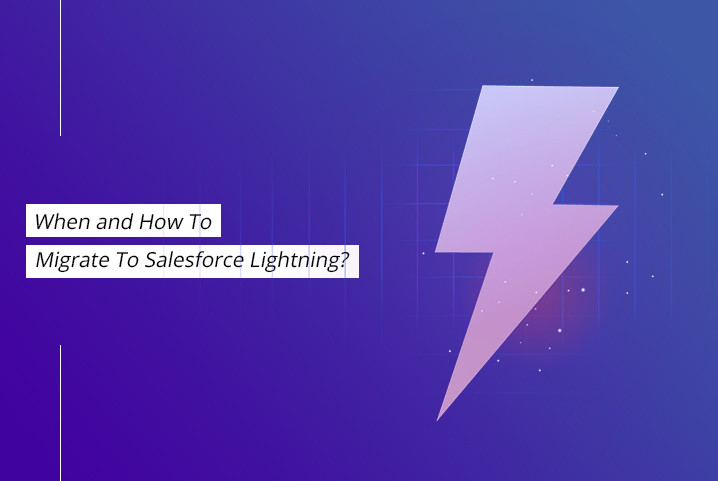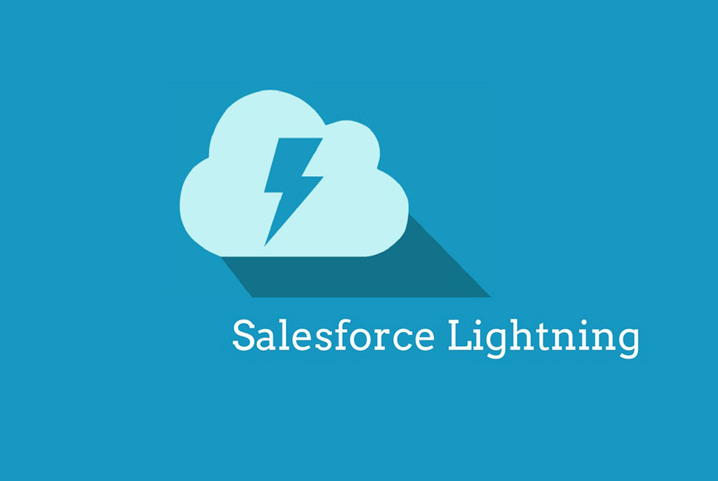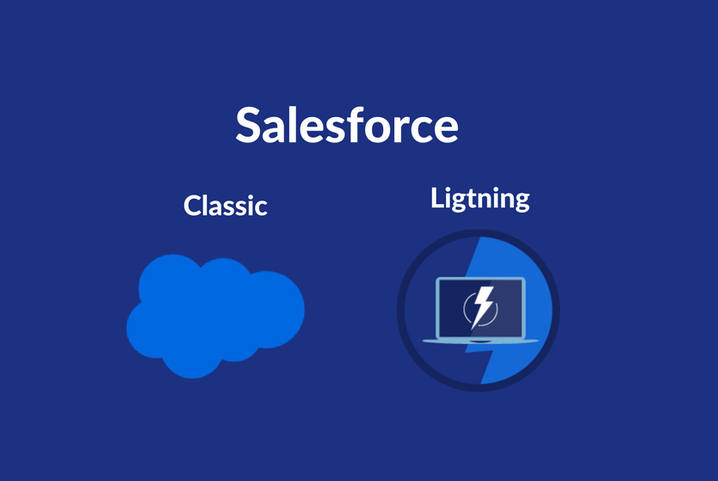
The introduction of Salesforce Lightning experience in 2014 was, in many ways a prophecy about the future of CRM solutions. Packed with AI and analytics features, the salesforce lightning experience enabled businesses to transform their sales in ways unimagined before. Designed to meet the mobility needs of enterprises in the 21st century, salesforce lightning is faster, easier to adopt, and extremely efficient. As stated by one of the salesforce users; “It is a CRM tool that every 21st-century business deserves.”

Migration to salesforce lightning from classic salesforce promises improved productivity, stronger integrations, and insight-driven decision making. The interactive UI, coupled with easy process automation enables the businesses to provide a delightful experience. However, switching anytime anywhere may not be the right choice. Therefore, this blog will tell you when and how to press the SWITCH button.
Planning: The Foremost Necessity
Planning is the first and most essential step in lightning migration. A proper roadmap aligned with the business goals, will not only ensure smooth adoption but will also maximize the ROI.
For First-Time Salesforce Users: If you are using Salesforce for the first time, then you shouldn’t have any second thoughts on adopting salesforce lightning. However, you will be required to train your system admins about the Salesforce Visualforce. The lightning experience is an extension of the classic and proper knowledge of both the worlds is needed to gain more from salesforce strategies.
For Existing Salesforce Users: Existing Salesforce users need to tick a few boxes before enabling lightning in Salesforce Classic. Here’s the checklist:
Step 1. Evaluate Your Needs
Begin with asking yourself the following set of questions:
- Is Salesforce Classic fit enough to serve all your existing and future business needs?
- Can the business process and workflows be further automated?
- Is there still a room for achieving higher levels of productivity and efficiency?
- Will adoption be a challenge for the employees?
Once you have answered all these questions, you will have a clear picture and idea on how to shape the migration strategy i.e., whether to press the green button or wait a little longer. And in case all the answers are a resounding ‘Yes,’ then it’s time to move over to Step 2.
Step 2. Collect Adequate Information
Before switching over to salesforce lightning, it is paramount to assess the needs and then take the plunge. Collect adequate information on every aspect of the business that is tied with Salesforce like data, user interface, third-party AppExchange apps, etc. Further, consider finding answers to the following questions to make the information gathering process accurate and reliable.
What are the workflows and processes that need a makeover? What are the lightning components that are required the most? Will the current salesforce integration support the new lightning experience? Will migration impact day-to-day business activities? Etc.
If the analysis of all the dependent and independent variables agree with lightning as the right step, then it’s time to take the plunge in the Salesforce journey.

Step 3: Lightning Trials
Salesforce allows existing users to use Lightning on a trial basis. It’s like going on a test drive to collect valuable user feedback. These feedbacks play a significant role in making an informed choice. And, in case, the trial feedback is not conclusive enough, you don’t need to call curtains on your migration plans. You still have the option of Readiness Check.
Step 4: The Readiness Check
A readiness check is an excellent tool designed to evaluate an organization’s preparedness for the lightning experience. In simple terms, the tool offers a blueprint of the journey that the organization or business must undertake for lightning success.
The tool also gives users a report on how the existing features and tools will behave in lightning experience. This tool is ideal to know where the firm stands and the areas which deserve attention to be lightning ready. Based on these insights, you can take the necessary steps to eliminate existing vulnerabilities and ensure migration success.
Step 5: Bringing Employees on the Same Boat as you
Here comes the most challenging step i.e., ensuring that everybody in the organization is at ease with the adoption process. As the UI changes, it requires a fair amount of training to get accustomed to it.
Contrary to popular belief, these challenges are not as challenging to overcome as they may appear initially. You can start with a small set or group of people who are willing to work on salesforce lightning. Once they are well-trained, you can use their experience to highlight the advantages that the migration has brought to not just to the business but also to the workplace.
In addition to the above, ensure proper training and support to one and all. It is also essential to prepare a live document guide which can be edited and updated easily. It must have all the necessary information and instructions on every function and feature. By doing this, you will be able to save a significant amount of time and fast-track the adoption process.
Final Words
Transition to salesforce lightning requires both time and effort. Plus the training and adoption programs must also be well thought and organized. If you are looking for a shift from salesforce classic but holding back due to additional responsibilities, then we have got you covered. With a team of the best salesforce consultants and practitioners, we offer a 360-degree salesforce implementation service that is frictionless, productive, and cost-effective.








